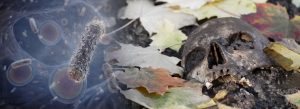National Institute of Justice and CHORI – Collaboration with SoftGenetics® and California Department of Justice Date April 2016 Overview Degraded and mixed DNA samples are often encountered in forensic cases and pose interpretation challenges. Mitochondrial DNA (mtDNA) markers are ideal targets…
Category: Reports (page 17)
Success Story: Addressing a Key Challenge for PCR-Based Forensic Tests
National Institute of Justice and DNA Polymerase Technologies Date April 2016 Overview Polymerase Chain Reaction (PCR) inhibitors are present in blood, soil, and reagents, and represent a key challenge for PCR-based forensic tests, resulting in false negatives and poor sensitivity…
Success Story: Demonstrating Objectivity in Ballistic Identification
National Institute of Justice and Intelligent Automation, Inc. Date April 2015 Overview Firearms experts are seeking to strengthen their understanding of the accuracy and reliability of methods they use to associate fired ammunition recovered from a crime scene with a…
Success Story: Introducing New Methods for DNA Analysis
National Institute of Justice and Midwest Research Institute Date April 2015 Overview Dr. Micah Halpern, formerly of Midwest Research Institute, used National Institute of Justice (NIJ) research grants to develop a unique genotyping method that is capable of rapidly producing…
Success Story: Advancing Rapid DNA Analysis
National Institute of Justice and NetBio Date April 2015 Overview Using research grants provided by the National Institute of Justice (NIJ), NetBio of Waltham, MA, developed a Rapid DNA Analysis (RDA) system that is much faster at developing DNA profiles…
Success Story: Understanding the Ecology of Human Decomposition Methods for Estimating Postmortem Interval
National Institute of Justice and the National Museum of Health and Medicine Date April 2015 Overview Data on the microbiome of decomposing and skeletonized remains are providing an avenue for understanding how microbial communities may be used to augment medicolegal…
Success Story: Bringing Short Tandem Repeat DNA Identification to Law Enforcement
National Institute of Justice, UC Berkeley, and IntegenX Date April 2015 Overview Dr. Richard Mathies, chemist and professor at UC, Berkeley, was awarded NIJ funding to develop faster, more reliable, higher throughput, more sensitive, and more integrated technologies for forensic…







